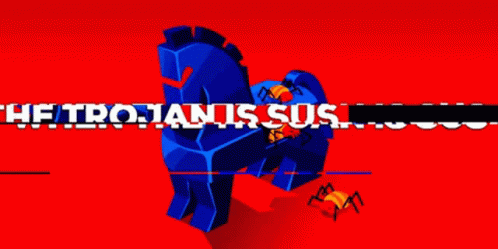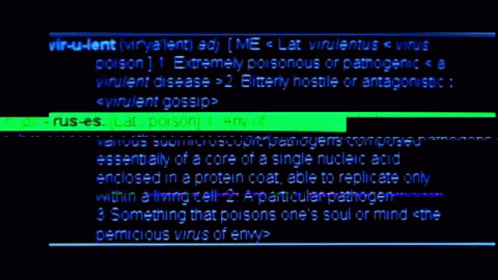A trojan virus is a malicious software program that disguises itself as a legitimate file or program, allowing hackers to gain unauthorized access to a computer system.
Removing trojan viruses is crucial to protect your personal information, prevent further damage to your computer, and maintain its optimal performance.
Symptoms of a Trojan Virus
- Unusual computer behavior: If your computer starts behaving erratically, such as freezing or crashing frequently, it could signify a trojan virus infection.
- Slow performance: A significant decrease in your computer’s speed and responsiveness might indicate the presence of a trojan virus.
- Pop-up ads: An excessive amount of pop-up ads appearing on your screen, especially when you’re not browsing the internet, could be a symptom of a trojan virus.
- Unexpected system crashes: Sudden and frequent system crashes or restarts without any apparent reason may be caused by a trojan virus.
How to Identify a Trojan Virus
To identify a trojan virus on your computer, follow these steps:
- Use antivirus software: Install a reputable program and regularly update it to detect and remove trojan viruses.
- Conduct regular scans: Perform full system scans with your antivirus software to identify and eliminate trojan viruses.
- Monitor network activity: Pay attention to any suspicious network activity, such as outgoing connections to unfamiliar IP addresses, as it may indicate a trojan virus attempting to communicate with a remote server.
Prevention Tips
Prevention is the key to avoiding trojan virus infections. Here are some preventive measures to consider:
- Keep software and operating systems up to date: Regularly update your computer’s software and operating system to patch any vulnerabilities that trojan viruses could exploit.
- Be cautious while downloading files or visiting websites: Only download files from trusted sources, and be cautious when visiting unfamiliar websites, as they may contain malicious content.
- Use strong passwords and enable firewalls: Choose strong and unique passwords for all your online accounts and enable firewalls on your computer to block unauthorized access.
How to Detect Trojans on your PC?

One of the first steps in removing a Trojan from your PC is detecting that it is there in the first place. There are a few common signs that you may have a Trojan on your computer:
- Your computer is running slower than usual
- You are seeing pop-ups or other unwanted ads
- Your home page or search engine has changed without your permission
- You are being redirected to unfamiliar websites
- You are seeing new icons or programs on your desktop that you didn’t install
If you notice any of these signs, it’s possible that you have a Trojan on your computer and should take action to remove it.
To detect and remove a Trojan, you will need to use antivirus software. Most modern computers come with some form of antivirus protection, but if you don’t have any, you can download and install a free or paid antivirus program.
Once you have antivirus software installed, you can use it to scan your computer for Trojans.
To scan for Trojans using your antivirus software:
- Open the antivirus program.
- Click the “Scan” or “Scan Now” button.
- Choose whether you want to do a quick scan or a full system scan. A full system scan will take longer, but is more thorough.
- Click “Start Scan” to begin the process.
If the antivirus program finds any Trojans, it will give you the option to remove them. Make sure to follow the prompts to remove the Trojans from your computer.
It’s a good idea to run a scan regularly to ensure that your computer is free of Trojans and other malware.
Steps to Remove Trojan Viruses

If you suspect that your computer is infected with a trojan virus, follow these steps to remove it:
Step 1: Disconnect from the internet – Disconnect your computer to prevent the trojan virus from communicating with its remote server.
Step 2: Enter Safe Mode – Restart your computer and enter Safe Mode, which allows you to remove the trojan virus without running in the background.
Step 3: Identify and terminate suspicious processes – Open the Task Manager and look for any unfamiliar or suspicious processes. Terminate those processes to stop the trojan virus from running.
Step 4: Delete infected files – Use your antivirus software to scan and remove any infected files from your computer.
Step 5: Remove registry entries – Open the Registry Editor and delete any suspicious or malicious registry entries associated with the trojan virus.
Step 6: Run a full system scan with antivirus software – After following the previous steps, perform a full system scan with your antivirus software to ensure the trojan virus is completely removed.
Preventing future Trojan infections
Once you have removed a Trojan from your PC, it is important to take steps to prevent future infections. Here are some best practices for protecting your computer from Trojans and other malware:
- Keep your operating system and antivirus software up to date: Installing updates for your operating system and antivirus software can help protect your computer from new threats. Make sure to regularly check for and install updates to keep your computer safe.
- Be cautious when browsing the internet: Only visit websites that you trust, and avoid clicking on links or downloading files from unfamiliar sources.
- Use a firewall: A firewall can help block unwanted traffic and protect your computer from external threats. Most operating systems come with a built-in firewall, but you can also install a separate firewall program.
- Use strong, unique passwords: Using strong, unique passwords for your accounts can help protect your personal information and prevent unauthorized access to your accounts.
- Avoid using public Wi-Fi: Public Wi-Fi networks can be vulnerable to hacking, so it is best to avoid using them for sensitive activities such as online banking or shopping.
Additional Measures
In addition to removing the trojan virus, take these measures to mitigate any potential damage:
- Change passwords: If you suspect your passwords may have been compromised, change them immediately, especially for your online banking and email accounts.
- Monitor bank accounts and credit cards: Keep a close eye on your bank accounts and credit card statements for unauthorized transactions.
- Educate others about trojan viruses: Share your knowledge with friends and family to help them protect their computers and personal information.
Frequently Asked Questions (FAQs) on remove trojans
What is a Trojan?
Trojan is a type of malware that can compromise your computer and cause a variety of problems. It can be hard to find, and cybercriminals may be able to access your personal information or use your computer to do bad things.
How do I know if I have a Trojan on my computer?
There are a few common signs that you may have a Trojan on your computer, including a slower than usual performance, pop-ups or other unwanted ads, a changed home page or search engine, redirects to unfamiliar websites, and new icons or programs on your desktop that you didn’t install.
How do I remove a Trojan from my computer?
To remove a Trojan from your computer, you will need to use antivirus software. Most modern computers come with some form of antivirus protection, but if you don’t have any, you can download and install a free or paid antivirus program. Once you have antivirus software installed, you can use it to scan your computer for Trojans and remove them. It’s a good idea to run a scan regularly to ensure that your computer is free of Trojans and other malware.
How can I prevent future Trojan infections?
To prevent future Trojan infections, it is important to keep your operating system and antivirus software up to date, be cautious when browsing the internet, use a firewall, use strong, unique passwords, and avoid using public Wi-Fi networks. You may also want to consider using additional security software, such as a malware protection program or a VPN (virtual private network), to further secure your computer.
Is it possible to remove a Trojan without using antivirus software?
Most of the time, it’s best to use antivirus software to get rid of Trojans because it was made for this purpose and can be the best way to find and get rid of malware. However, there are other methods you can try, such as using a malware removal tool or manually deleting temporary files and suspicious programs. Be careful when using these methods, because if you don’t do it right, removing a Trojan or other malware can hurt your computer even more.
Conclusion
Removing trojan viruses is crucial to safeguard your computer and personal information from unauthorized access and potential damage.
By following the outlined steps and implementing preventive measures, you can effectively remove trojan viruses and minimize the risk of future infections.







